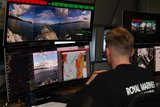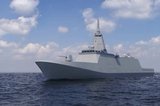Life extension work completed on Katmai Bay
Service life extension work has been completed on the US Coast Guard's Katmai Bay cutter as part of the In-Service Vessel Sustainment (ISVS) programme, the agency announced on 22 October.
Following completion of the work, the cutter departed the Coast Guard Yard in Curtis Bay, Maryland on 29 September 2018, and will now return to Sault Ste. Marie, Michigan.
Katmai Bay is the sixth of nine 140ft icebreaking tugs to undergo work through ISVS. The tugs entered service in the 1970s, and the programme aims to extend each cutter’s service life by 15 years with upgrades of propulsion and electrical systems, replacement of the boat-launching davit and habitability improvements.
The ISVS programme is the coast guard’s strategic class-by-class evaluation of its vessels to determine what maintenance and/or upgrades are necessary for them to reach or extend their service life.
More from Naval Warfare
-
![NATO tests use of “undetectable, jam-proof” laser communication in maritime scenarios]()
NATO tests use of “undetectable, jam-proof” laser communication in maritime scenarios
As part of its effort to better prepare its capabilities for operations in contested and congested scenarios, NATO evaluated a Lithuanian ship-to-ship terminal designed to not be susceptible to enemy interference.
-
![US Navy advances with the Harpoon Service Life Extension Programme]()
US Navy advances with the Harpoon Service Life Extension Programme
The US Navy plans to improve Harpoon’s anti-ship and land attack capabilities by equipping the missiles with sensors and technologies required for succeeding in future battlespace.
-
![Mitsubishi eyes future with Australia’s Mogami selection]()
Mitsubishi eyes future with Australia’s Mogami selection
With Australia’s selection of the Mogami-class for Project Sea 3000, Mitsubishi is investigating local production in the next decade as potential export opportunities emerge.
-
![Thales’ new Sonar 76Nano could equip UK Royal Navy on anti-submarine warfare missions]()
Thales’ new Sonar 76Nano could equip UK Royal Navy on anti-submarine warfare missions
The new sonar is designed to equip uncrewed underwater vessels, with the potential to be used by the Royal Navy for its Atlantic Bastion and Atlantic Net missions.
-
![Hanwha wins Australian government approval to increase its stake in Austal]()
Hanwha wins Australian government approval to increase its stake in Austal
The contract would mean the two shipbuilders can collaborate strategically and enhance shipbuilding capabilities in Western Australia.























